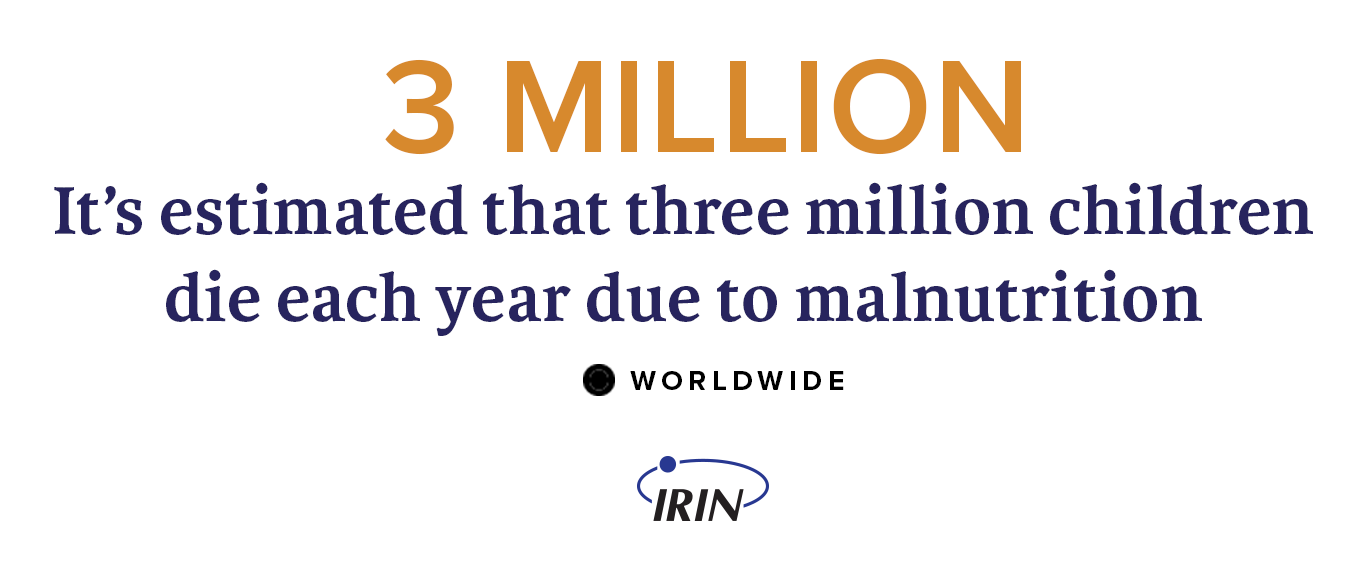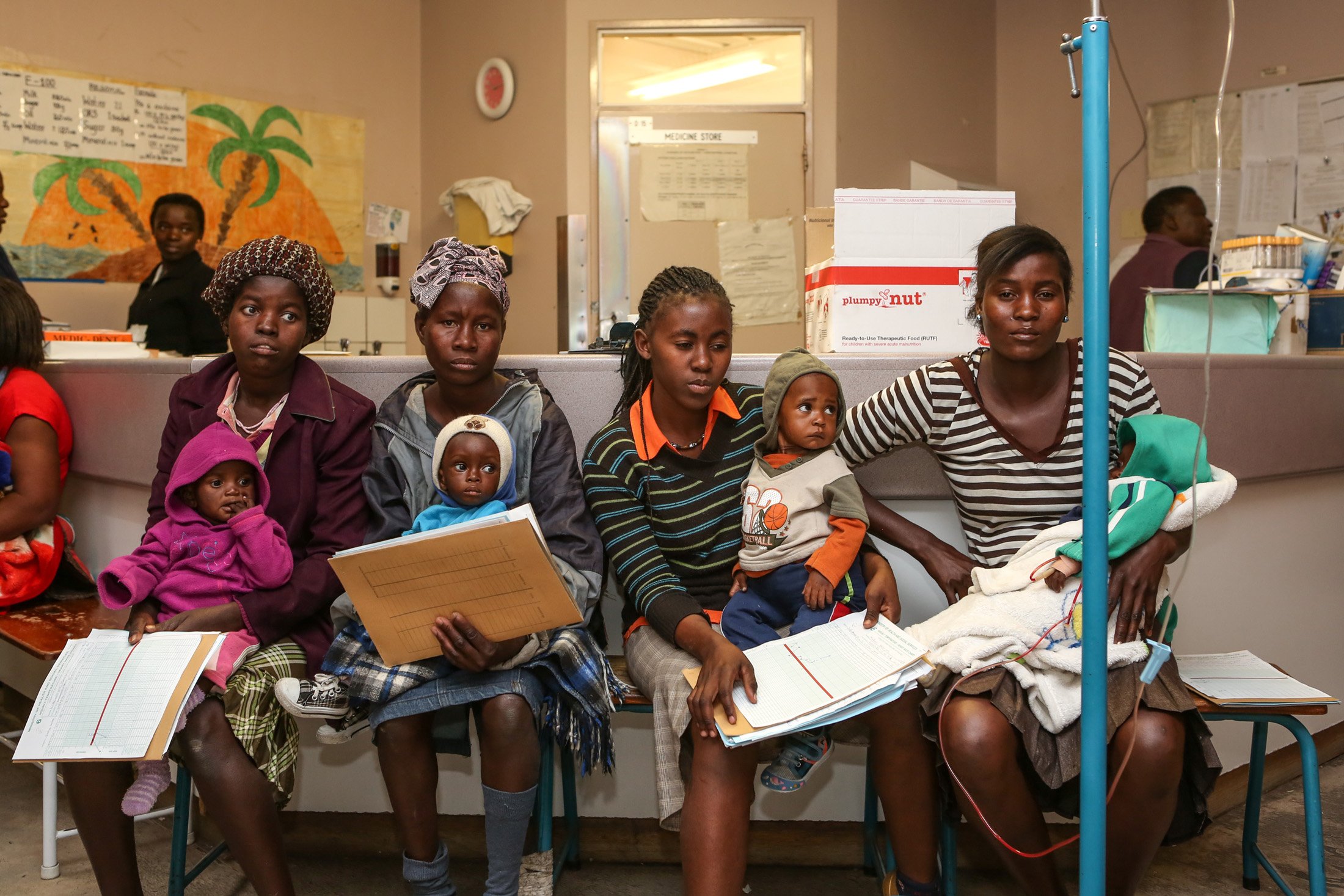In South Sudan, an acutely malnourished child may have to travel up to eight hours along unpaved roads, through swamps and mud, under threat of violence, to reach a medical clinic where treatment can be administered. To complete a full course of treatment, this journey must be repeated once a week for three months or longer.
The result, not surprisingly, is that the majority of malnourished children in South Sudan and many other countries are not getting the urgent treatment they need. Globally, malnutrition accounts for roughly half of all deaths of children under the age of five, yet only one in 10 severely malnourished children get treatment. That amounts to approximately three million children each year whose deaths are entirely preventable. The biggest obstacle to treatment is the inability of families to travel long journeys to health facilities, or to bear the costs of taking time away from home or work.

But the barriers to treatment go beyond poverty or weak governments and infrastructure. They are also the result of global decisions. Acute malnutrition is a continuum condition, but severe and moderate acute malnutrition are treated separately in different programmes, with different protocols and therapeutic products managed by separate UN agencies. Funding shortages and the logistical difficulties of coordinating two programmes mean that treatment is often only available for severe malnutrition. The result of this system is that children often must deteriorate into the life-threatening stages of severe malnutrition before they are eligible for treatment.
The global community can do better, but only by fundamentally challenging how we think about delivering nutrition services for those who need it most.
Bringing treatment home
Across the world, three leading causes of child death – diarrhoea, malaria, and pneumonia – can be treated by local health workers right in children’s homes. In many African countries, these workers often have little to no formal education, but they are given rudimentary training and equipped with simple-to-use tools that allow them to diagnose and begin treatment of all three conditions. In South Sudan, this approach has increased treatment for diarrhoea, malaria and pneumonia tenfold over what could have been achieved if children were required to visit distant health facilities.
Unfortunately, the treatment of malnutrition — beyond identification and referral — is not currently part of this community-based model. In South Sudan — and most countries where the burden of acute malnutrition is highest — treatment is limited to health facilities because it has been assumed that only a literate health worker can provide treatment. But the effect of this policy, in poor countries where literacy is very low, is to condemn thousands of children to preventable deaths.

Since 2015, the International Rescue Committee has been developing and field-testing tools that enable people with low-literacy levels to treat malnutrition. We’ve simplified treatment diagnostics and dosages, how to monitor progress over the course of treatment, and how to match patient records with individual children so they can all be done by someone who doesn’t know how to read or write.
We’ve learnt that it is possible for people with little to no education to provide effective treatment for malnutrition if they are given the appropriate tools and training. In the future, it may be possible to eliminate the necessity for many malnourished children to make gruelling journeys to health centres.
Creating a unified treatment protocol
No one deliberately set out to make the treatment of malnutrition needlessly complex, but decisions made over the years have evolved into standardised practices that are hard to change. In 2016, the IRC and its partners — Action Against Hunger and the London School of Hygiene and Tropical Medicine — completed the first phase of a global research initiative that challenges some of the assumptions preventing progress in treating malnutrition.
Together, the consortium developed a protocol that eliminates the binary distinction between severe and moderate acute malnutrition, and instead offers a unified and simplified protocol for treating both. Having one protocol for the two conditions lowers costs, thereby improving the availability of treatment and reaching more children who are considered moderately malnourished before they deteriorate into the potentially irreversible consequences of severe malnutrition.
The simplified protocol also supports efforts to enable low-literacy local health workers to treat malnutrition in their communities. We look forward to seeing the impact health workers in Kenya and South Sudan will have as they pilot this approach in 2017.
The way forward
We now know that treatment need not be restricted to the confines of clinics and to children who are severely malnourished, but can be made available to even moderately malnourished children in every corner of a country.
Changing the way we deliver international aid can feel like a daunting task. But it is far easier than the perilous journeys thousands of families in South Sudan make every day to access life-saving treatment for their acutely malnourished children. We should be willing to take every step necessary to shorten those journeys.
(TOP PHOTO: Mothers with their malnourished children at Engela District Hospital in northern Namibia's Ohangwena Region. Jordi Matas/UNICEF)
Casie Tesfai is the senior technical advisor for nutrition at the International Rescue Committee. Jeanette Bailey is project director for the COMPAS research consortium at the International Rescue Committee. The projects described are supported by The Eleanor Crook Foundation, the Office of US Foreign Disaster Assistance, and the Children’s Investment Fund Foundation.





